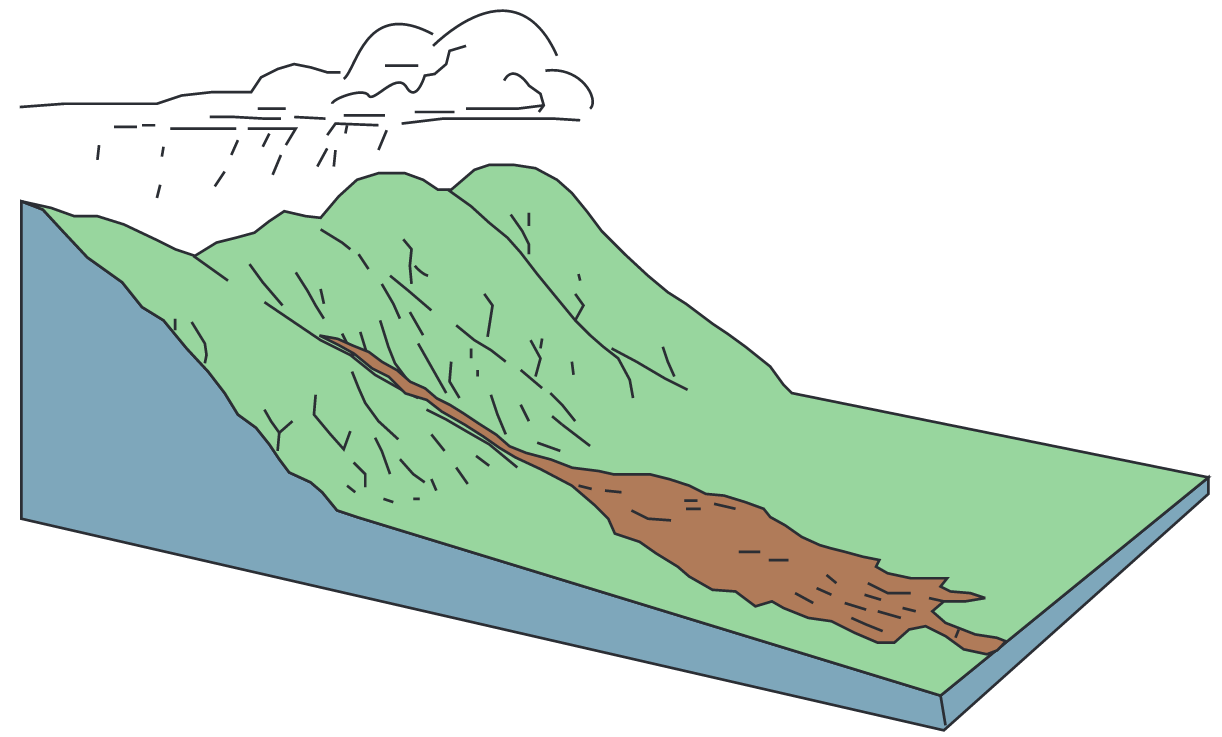Debris flows are among the most destructive types of landslides, involving the rapid downslope movement of a mixture of water, soil, rock, and organic material (Figure 4). According to Cruden and Varnes (1996), debris flows are classified as a type of flow movement, which means they behave as a fluidized mass rather than moving as a rigid body. Internal deformation plays a crucial role in their motion, distinguishing them from slides and falls.
One of the defining characteristics of debris flows is their high water content, which reduces internal friction and allows the material to move rapidly down steep slopes. Due to their fluid-like behavior, debris flows can reach speeds of up to 80 km/h, depending on factors such as slope gradient, material composition, and water content. The composition of debris flows is highly variable, including a mix of fine sediments, coarse rock fragments, and organic debris, with grain sizes ranging from clay particles to boulders several meters in diameter. Depending on the composition of water, rock and soil, the process is further subdivided into different end-members: mudslides, earth flows and debris flows.
Debris flows are primarily triggered by intense rainfall, rapid snowmelt, or a sudden increase in pore-water pressure, which saturates the material and initiates movement (Huggett 2011; Bierman & Montgomery 2014). Translational or rotational slides may evolve into an earth or debris flow if internal cohesion is further reduced by factors such as increased water content, leading to a transition from a sliding motion to a fluidized movement.
Within the NoeSLIDE project, a complex process that could evolve into a debris/earth flow can be found at the Hofermühle site. In particular, this site experienced in 2013 a similar evolution of the landslide process, starting from a sliding motion.
Figure 4: Schematic figure of a debris flow (Source: Highland & Bobrowsky, 2008).
Literature
Bierman, P. R. & D. R. Montgomery. 2014. Key concepts in geomorphology. New York, NY: Freeman [u.a.].
Cruden, D. M. & D. J. Varnes. 1996. Landslide types and processes. In Landslides: investigation and mitigation, eds. A. K. Turner & R. L. Schuster, 36-75. Washington, D.C.: National Academey Press
Highland, L. & Bobrowsky, P.T., 2008. The landslide handbook: a guide to understanding landslides, US Geological Survey Reston, VA, USA.
Huggett, R. J. 2011. Fundamentals of Geomorphology. London: Routledge.




